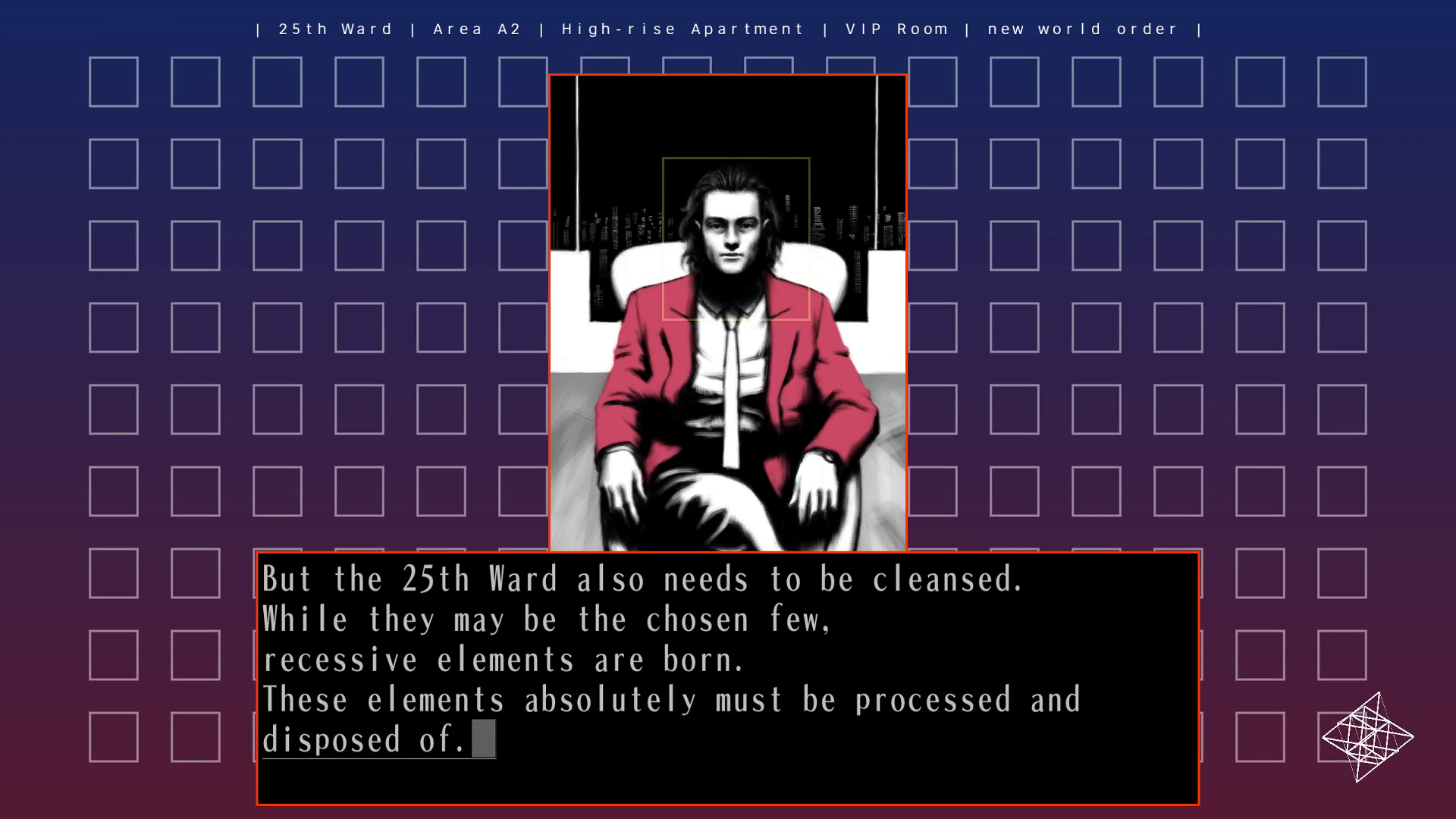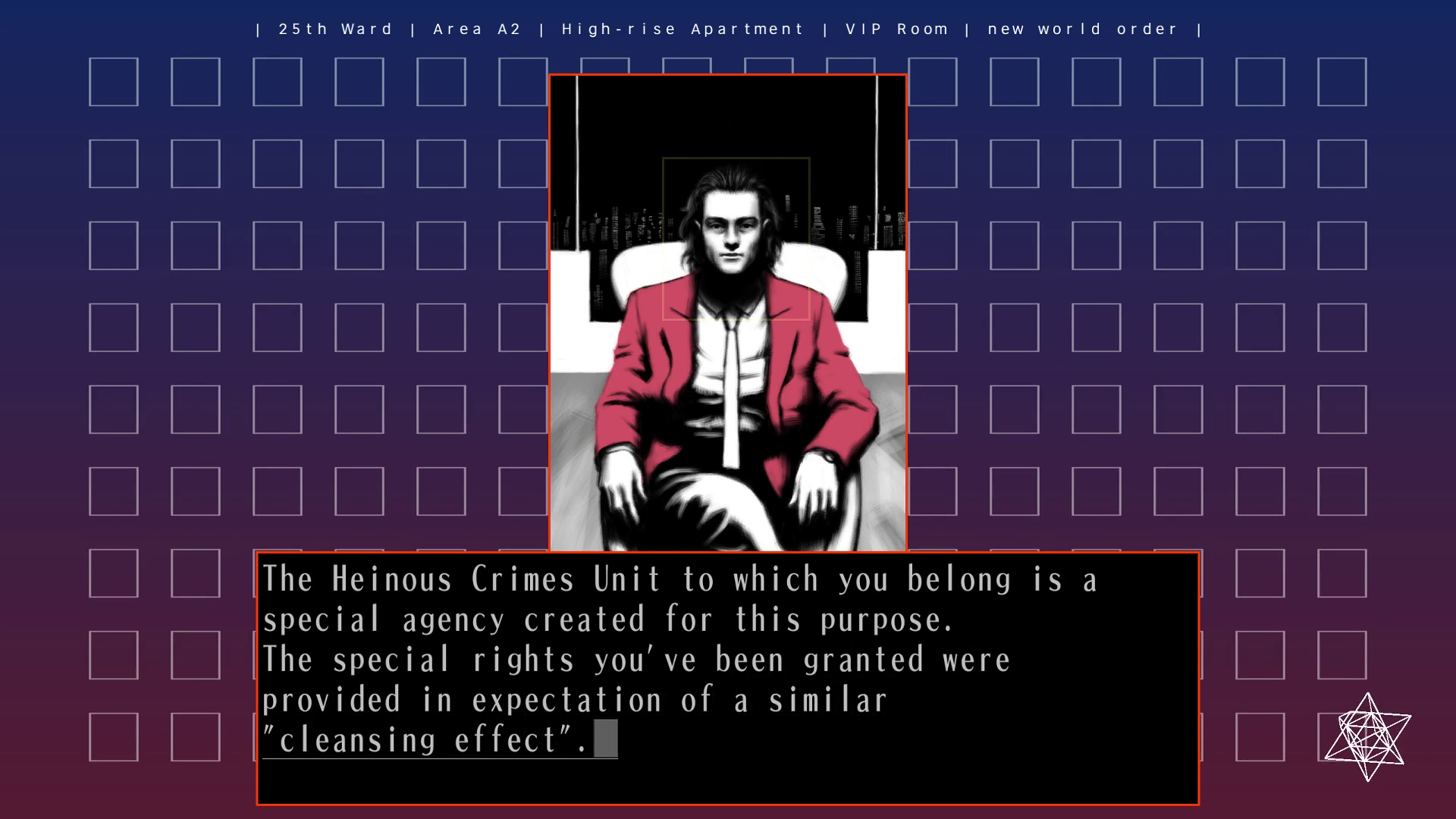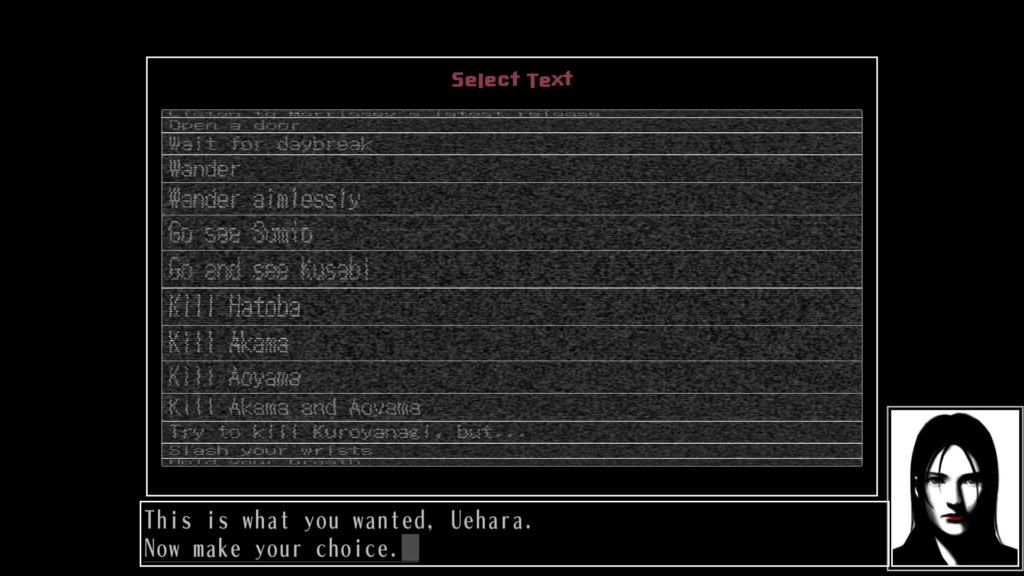At the end of “new world order,” on 8 October 2005, Nakane Kinshiro, owner of the 25th Ward and already aware of Kosaka’s plan, summons Uehara and Sakura to his penthouse at the top of Bayside Towerland to give them a new assignment. As far as I know, the story never specifies what Kinshiro wants done, but the lead-up to the mission certainly does not seem liberatory. Somewhere between a tech bro and a eugenicist, Kinshiro speaks of creating a “utopia” home only to “the chosen few” that will replace Tokyo and, like Sakura in “LifeCut,” articulates that this culling is the purpose of the HC Unit.


“[T]he 25th Ward needs to be cleansed,” he tells Uehara, trying to sell the player on his idea as well. “While they may be the chosen few, recessive elements are born. These elements absolutely must be processed and disposed of.” Furthermore, the surname “Nakane” implies that Kinshiro is a relative of Nakane Ginji, the TRO/CCO chairman who died in the Silver Case of 1979. Kinshiro is another fanatical pervert in the same “cycle of crime, dehumanization and death” the plutocrats perpetuate. (Pervert indeed: he compares his power over ordinary people’s lives to power over sex toys.)
However, whether Uehara accepts Kinshiro’s assignment is unclear. Sakura never mentions it again. It is possible, in a sympathetic reading, that the meeting with Kinshiro is Uehara gathering dirt to send back to Kosaka. After all, Kinshiro is aligned with the TRO/CCO, while Kosaka is aligned with the FSO. But what is certain is that Uehara does almost nothing for the entire duration of Correctness. Tokio never meets him this time around, either. Though present for the second case, in which he engages in investigation and ordinary adventure game puzzles with Shiroyabu and Kuroyanagi, Uehara vanishes in the third and fourth, “boys don’t cry” and “digital man.” Shiroyabu notices: “By the way, what the hell has Uehara been doing this whole time, anyway? […] His ass is as good as fired at this point.” In “electride,” Uehara briefly reappears only to do policework before Shiroyabu, on a quest to eliminate Kamui, unceremoniously kills him offscreen.
Unsurprisingly, given his powers, Uehara returns to life in the final case, “black out,” a joke about player choice in story-based video games. Suddenly, the player can choose from 100 possible endings. Instead of thematically or narratively meaningful resolutions, these are mostly goofy and irrelevant tangents, such as Uehara spontaneously exploding. In another, he ends the standoff by telling everyone about tea ceremonies. There is also exploration of alternate dimensions, reincarnation as space debris, discussion of the third season of Twin Peaks, and statements about Batman canon. In the ending “What’s that red light shining around Shiroyabu?” Uehara travels back in time to prevent the destruction of the 25th Ward, saving thousands of lives. Despite the claim that Uehara “is one huge chunk of muscle way past the level of Kamui [he is Kamui!] or Kurumizawa,” many of these endings feature the other characters killing him, and one even has him die and then encounter another Kamui.
